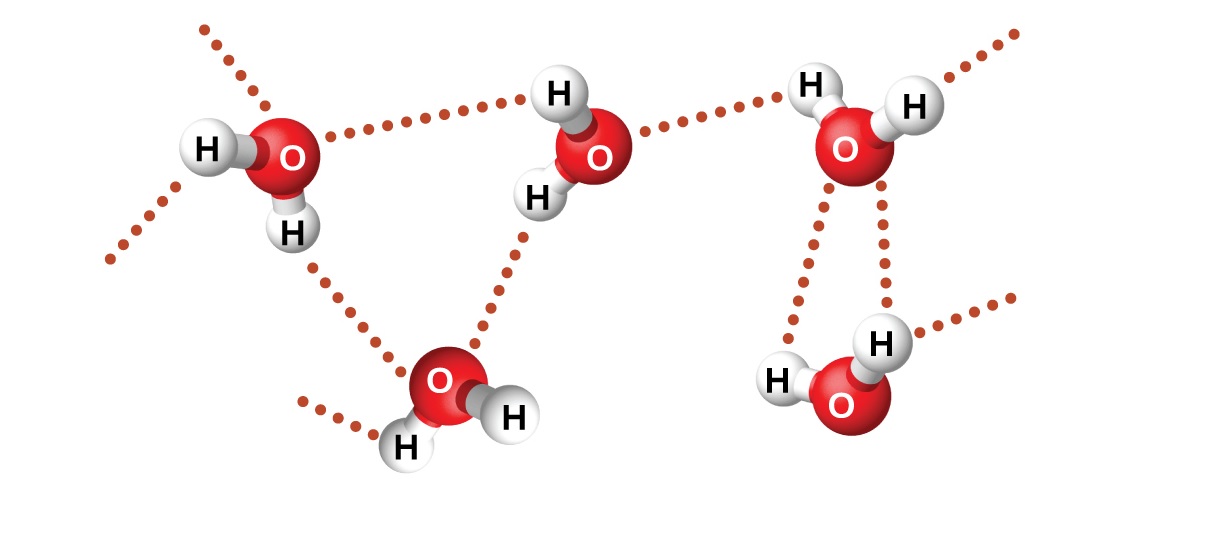
Intermolecular forces are a fundamental concept in chemistry that play a crucial role in determining the physical and chemical properties of substances. These forces are interactions between molecules and can have a significant impact on various phenomena, such as boiling points, solubility, and phase transitions. Understanding intermolecular forces is essential in fields ranging from pharmaceuticals and materials science to environmental science and biology.
In this article, we will explore 17 astounding facts about intermolecular forces that will not only deepen your knowledge of chemistry but also shed light on the fascinating world of molecular interactions. From the strongest intermolecular force to the influence of temperature on these forces, prepare to be amazed by the remarkable intricacies of the molecular world and how they shape our understanding of matter and its behavior.
Key Takeaways:
- Intermolecular forces determine how substances behave, like turning from a solid to a liquid or gas. They also affect how liquids form droplets and rise in narrow tubes.
- These forces are like tiny magnets between molecules, influencing properties like boiling points, solubility, and even the way our bodies work.
What are Intermolecular Forces?
Intermolecular forces are attractive forces that exist between molecules. They play a crucial role in determining the physical properties of substances, such as boiling points, melting points, and solubility.
Three Types of Intermolecular Forces
There are three main types of intermolecular forces: London dispersion forces (also known as Van der Waals forces), dipole-dipole interactions, and hydrogen bonding. These forces vary in strength depending on the molecules involved.
London Dispersion Forces
London dispersion forces are the weakest type of intermolecular force. They occur when temporary fluctuations in electron distribution create an instantaneous dipole in one molecule, which induces a dipole in a neighboring molecule.
Dipole-Dipole Interactions
Dipole-dipole interactions occur between molecules that have permanent dipoles. The positive end of one molecule is attracted to the negative end of another molecule, resulting in a relatively stronger intermolecular force.
Hydrogen Bonding
Hydrogen bonding is a special type of dipole-dipole interaction that occurs when a hydrogen atom is bonded to a highly electronegative atom, such as nitrogen, oxygen, or fluorine. It is the strongest intermolecular force and has a significant impact on the properties of substances.
The Role of Intermolecular Forces in Phase Changes
Intermolecular forces are responsible for the phase transitions between solid, liquid, and gas states. They dictate the energy required to break or form intermolecular bonds, resulting in the change of state.
Surface Tension Relies on Intermolecular Forces
Surface tension is the result of intermolecular forces between liquid molecules. It creates a “skin” on the surface of a liquid, allowing substances to float or form droplets.
Capillary Action and Intermolecular Forces
Capillary action, when a liquid rises against gravity in a narrow tube, is due to cohesive and adhesive forces between the liquid and the tube’s surface. These forces are intermolecular in nature.
Intermolecular Forces Determine Solubility
The ability of a substance to dissolve in a solvent is determined by the strength of the intermolecular forces between the solute and solvent molecules. Like dissolves like: substances with similar intermolecular forces tend to be soluble in each other.
Intermolecular Forces and Boiling Points
Substances with stronger intermolecular forces have higher boiling points because more energy is required to overcome these forces and convert the substance from a liquid to a gas.
Intermolecular Forces Influence Viscosity
Viscosity, a measure of a fluid’s resistance to flow, is affected by intermolecular forces. Substances with stronger forces tend to have higher viscosity.
The Relationship Between Intermolecular Forces and Vapor Pressure
Intermolecular forces affect the vapor pressure of a substance. Substances with weaker forces have higher vapor pressure because more molecules can escape from the liquid phase to the gas phase.
Solids with Strong Intermolecular Forces
Substances with strong intermolecular forces often form crystalline solids with well-defined structures due to the close packing of molecules or ions.
Intermolecular Forces and Electrical Conductivity
Unlike ionic compounds, most molecular substances have weak intermolecular forces and are poor conductors of electricity in any phase.
Intermolecular Forces and Surface Area
The larger the surface area of a molecule, the stronger the intermolecular forces it can exhibit. This is due to an increase in contact points between molecules, thereby increasing the opportunities for attractive forces to occur.
The Effect of Temperature on Intermolecular Forces
Increasing the temperature of a substance typically weakens intermolecular forces, causing substances to change states or become more fluid.
The Importance of Intermolecular Forces in Biology
Intermolecular forces are vital in biological systems. They play a critical role in protein folding, DNA replication, and the structure and function of cell membranes.
Conclusion
Intermolecular forces play a crucial role in shaping the properties and behavior of substances. Understanding these forces is essential in fields such as chemistry, physics, and materials science. In this article, we have explored 17 astounding facts about intermolecular forces, shedding light on the intriguing world of molecular interactions.
From the weaker dispersion forces to the stronger hydrogen bonds, these forces determine various properties of substances, such as boiling points, solubility, and viscosity. The diverse range of intermolecular forces allows for a wide variety of substances with different physical and chemical properties.
By delving into the fascinating world of intermolecular forces, we gain a deeper understanding of why some substances are gases while others are solids, why certain liquids evaporate quickly, and how molecules come together to form complex structures.
As scientists continue to unravel the mysteries of intermolecular forces, we can expect further advancements in fields like materials engineering, drug development, and nanotechnology. The study of these forces enables us to manipulate and control the behavior of substances, leading to remarkable technological advancements and innovations.
FAQs
1. What are intermolecular forces?
Intermolecular forces are the attractive forces that exist between molecules. They are responsible for holding molecules together in the liquid and solid states.
2. What are the different types of intermolecular forces?
There are several types of intermolecular forces, including dispersion forces, dipole-dipole forces, and hydrogen bonds.
3. How do intermolecular forces affect boiling points?
Substances with stronger intermolecular forces have higher boiling points. This is because more energy is required to overcome the attractive forces between molecules and convert the substance from a liquid to a gas.
4. Can intermolecular forces be broken?
Yes, intermolecular forces can be broken. When a substance undergoes a phase change, such as melting or evaporation, the intermolecular forces are weakened or overcome entirely.
5. How do intermolecular forces affect solubility?
Intermolecular forces play a critical role in determining solubility. Substances with similar intermolecular forces are more likely to dissolve in each other, whereas substances with different intermolecular forces may not mix well.
6. What is the significance of intermolecular forces in drug development?
Understanding intermolecular forces is vital in drug development. The interactions between the drug molecules and the target receptors in the body are governed by intermolecular forces, which determine the drug’s effectiveness and bioavailability.
7. How do hydrogen bonds differ from other intermolecular forces?
Hydrogen bonds are stronger than other intermolecular forces such as dispersion and dipole-dipole forces. They occur when hydrogen is bonded to a highly electronegative atom such as oxygen or nitrogen.
8. Can intermolecular forces be observed?
While intermolecular forces cannot be seen directly, their effects can be observed in the physical and chemical properties of substances.
9. Can intermolecular forces be manipulated?
Yes, intermolecular forces can be manipulated through various methods, such as changing temperature, pressure, or introducing solvents with different intermolecular forces.
10. How are intermolecular forces related to surface tension?
Surface tension is a result of intermolecular forces. The cohesive forces between liquid molecules give rise to a “skin” or surface layer with higher energy.
Intrigued by intermolecular forces? Keep exploring! Delve deeper into London dispersion forces, the weakest yet most common type of interaction between molecules. Vapor pressure, a crucial concept in chemistry, is influenced by intermolecular forces—learn more about this fascinating relationship. Finally, discover how non-ideal gases deviate from the ideal gas law due to intermolecular forces and other factors. Continue your journey through the captivating world of chemistry with these related articles.
Was this page helpful?
Our commitment to delivering trustworthy and engaging content is at the heart of what we do. Each fact on our site is contributed by real users like you, bringing a wealth of diverse insights and information. To ensure the highest standards of accuracy and reliability, our dedicated editors meticulously review each submission. This process guarantees that the facts we share are not only fascinating but also credible. Trust in our commitment to quality and authenticity as you explore and learn with us.


